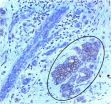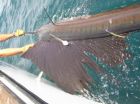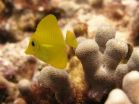AADR testifies to the FDA advisory panel on dental amalgam
2010-12-23
(Press-News.org) Gaithersburg, MD – On December 14-15, 2010, the U.S. Food and Drug Administration (FDA) convened an Advisory Panel to discuss several scientific issues that may affect the regulation of dental amalgam. At the conclusion of the hearing, the Panel voted to recommend that the FDA conduct further review of the material's safety.
The meeting comes on the heels of a July 2009 Final Rule (http://bit.ly/FDA2009FinalRule) from the FDA that reclassified dental mercury from a class I device to a class II device and designated special controls for dental amalgam, mercury and amalgam alloy. The 2009 ruling was the culmination of seven years of deliberation by the FDA and confirmed the safety of dental amalgam for use in all populations.
The Final Rule noted that "scientific studies using the most reliable methods have shown that dental amalgam exposes adults to amounts of elemental mercury vapor below or approximately equivalent to the protective levels of exposure identified by Agency for Toxic Substances and Disease Registry (ATSDR) and Environmental Protection Agency (EPA)."
On December 14, Dr. Mary Tavares, DMD, MPH, testified (http://bit.ly/FDA_Testimony) on behalf of the American Association for Dental Research (AADR) during the first day of the Advisory Panel meeting. Dr. Tavares, a Senior Investigator at the Forsyth Institute and a co-Principle Investigator on the New England Children's Dental Amalgam Trial (Bellinger DC et al), stated that "no statistically significant differences in adverse neuropsychological or renal effects were observed in children whose teeth were restored with dental amalgam compared to composite resin." The five year clinical trial, which ended in 2006, was reported in the Journal of the American Medical Association and funded by the National Institute of Dental and Craniofacial Research (NIDCR).
AADR continues to support the findings from the FDA 2009 Final Rule and the Association also supports the continual review of new scientific information regarding the safety of all dental products and materials, as it becomes available.
###To see AADR's full comments to the FDA Panel, visit http://bit.ly/DentalAmalgam.
Bellinger DC, Trachtenberg F, Barregard L, Tavares M, Cernichiari E, Daniel D, McKinlay S. (2006) Neuro-psychological and renal effects of dental amalgam in children. A randomized clinical trial. J. Am. Med. Assoc. 295(15):1775-1783.
About the American Association for Dental Research
The American Association for Dental Research (AADR), headquartered in Alexandria, Va., is a nonprofit organization with nearly 4,000 members in the United States. Its mission is: (1) to advance research and increase knowledge for the improvement of oral health; (2) to support and represent the oral health research community; and (3) to facilitate the communication and application of research findings. AADR is the largest Division of the International Association for Dental Research (IADR).
To learn more about the AADR, visit www.aadronline.org. Follow AADR on Twitter at www.twitter.com/DentalResearch.
END
ELSE PRESS RELEASES FROM THIS DATE:
2010-12-23
PHILADELPHIA – Overexpression or hyperactivation of ErbB cell-surface receptors drives the growth of many breast cancers. Drugs, like Herceptin, that block the receptors' signals halt tumor progression in some patients. However, not all patients' tumors respond, with some becoming resistant over time. Different drugs that interfere with other steps in the signaling pathway may improve the response of patients, yet little is known about these molecules.
Now, Marcelo G. Kazanietz, PhD, professor of Pharmacology at the University of Pennsylvania School of Medicine and colleagues, ...
2010-12-23
Researchers at The Wistar Institute announce the release of an online tool that will help scientists find "gene promoters"—regions along a DNA strand that tell a cell's transcription machinery where to start reading in order to create a particular protein. The Mammalian Promoter Database (MPromDb) integrates the genome sequencing data generated at Wistar with publicly available data on human and mouse genomics. MPromDb pinpoints known promoters and predicts where new ones are likely to be found, the researchers say.
"Several complete genome sequences are available, including ...
2010-12-23
Researchers have discovered evidence of a distinct group of "archaic" humans existing outside of Africa more than 30,000 years ago at a time when Neanderthals are thought to have dominated Europe and Asia. But genetic testing shows that members of this new group were not Neanderthals, and they interbred with the ancestors of some modern humans who are alive today.
The journal Nature reported the finding this week. The National Science Foundation's Behavioral and Cognitive Sciences Division partially funded the research.
An international team of scientists led by Svante ...
2010-12-23
Billfish and tuna, important commercial and recreational fish species, may be more vulnerable to fishing pressure because of shrinking habitat, according to a new study published by scientists from NOAA, The Billfish Foundation, and University of Miami Rosenstiel School of Marine and Atmospheric Science.
An expanding zone of low oxygen, known as a hypoxic zone, in the Atlantic Ocean is encroaching upon these species' preferred oxygen-abundant habitat, forcing them into shallower waters where they are more likely to be caught.
During the study, published recently in ...
2010-12-23
MADISON – To survive in a tumultuous environment, sea urchins literally eat through stone, using their teeth to carve out nooks where the spiny creatures hide from predators and protect themselves from the crashing surf on the rocky shores and tide pools where they live.
The rock-boring behavior is astonishing, scientists agree, but what is truly remarkable is that, despite constant grinding and scraping on stone, urchin teeth never, ever get dull. The secret of their ever-sharp qualities has puzzled scientists for decades, but now a new report by scientists from the ...
2010-12-23
CORVALLIS, Ore. – Marine ecologists at Oregon State University have shown for the first time that tiny fish larvae can drift with ocean currents and "re-seed" fish stocks significant distances away – more than 100 miles in a new study from Hawaii.
The findings add credibility to what scientists have believed for some time, but until now been unable to directly document. The study also provides a significant demonstration of the ability of marine reserves to rebuild fishery stocks in areas outside the reserves.
The research was published this week in PLoS One, a scientific ...
2010-12-23
Researchers at the University of Minnesota have discovered how HIV binds to and destroys a specific human antiviral protein called APOBEC3F. The results suggest that a simple chemical change can convert APOBEC3F to a more effective antiviral agent and that shielding of a common feature shared by related proteins may yield a similar outcome.
This discovery highlights the potential for a novel approach to combating HIV/AIDS that would seek to stabilize and harness the innate antiviral activity of certain human proteins, according to lead author John Albin, a researcher ...
2010-12-23
BUFFALO, NY (December 22, 2010) -- Experiments by a team of researchers in New York and New Jersey have generated evidence that questions the common belief that the pterygotid eurypterids ("sea scorpions") were high-level predators in the Paleozoic oceans. This group, which ranged the seas from about 470 to 370 million years ago (long before the dinosaurs appeared), included the largest and, arguably, scariest-looking arthropods known to have evolved on planet Earth. Reaching lengths of 2 ½ meters with a body supported by well-developed legs, and armed with a pair of forward-facing ...
2010-12-23
In a breakthrough that could lead to new treatments for patients with malignant melanoma, researchers from Mount Sinai School of Medicine have discovered that a particular protein suppresses the progression of melanoma through regulation of an oncogene, or gene responsible for cancer growth. The study is published in the December 23 issue of Nature.
Researchers studied the natural progression of melanoma using mouse and human cells, as well as patient samples and determined that the presence of a specific histone variant, which is a protein that helps package DNA, was ...
2010-12-23
A protein implicated in the development of vascular diseases may also contribute to the failure of arteriovenous (AV) fistulas created for vascular access in dialysis patients, according to a study appearing in an upcoming issue of the Journal of the American Society of Nephrology (JASN).
"Our findings raise the possibility that monocyte chemoattractant protein-1 (MCP-1) may contribute to the relatively poor outcomes regarding the function and longevity of human hemodialysis AV fistulas," comments Karl A. Nath, MB.ChB (Mayo Clinic, Rochester, MN).
AV fistulas are the ...
LAST 30 PRESS RELEASES:
[Press-News.org] AADR testifies to the FDA advisory panel on dental amalgam


